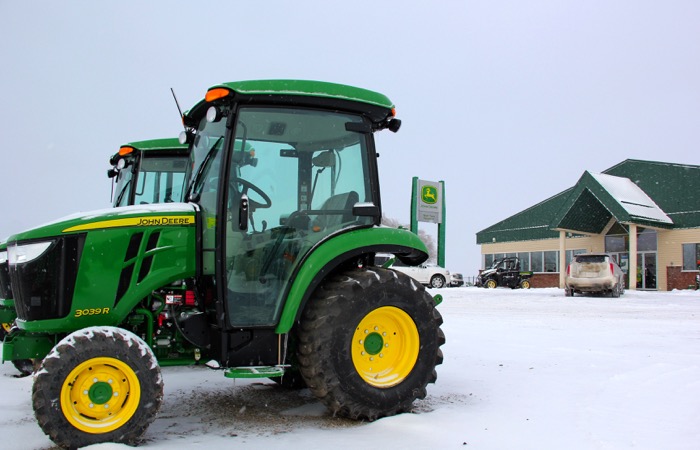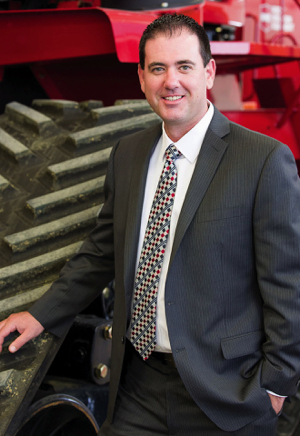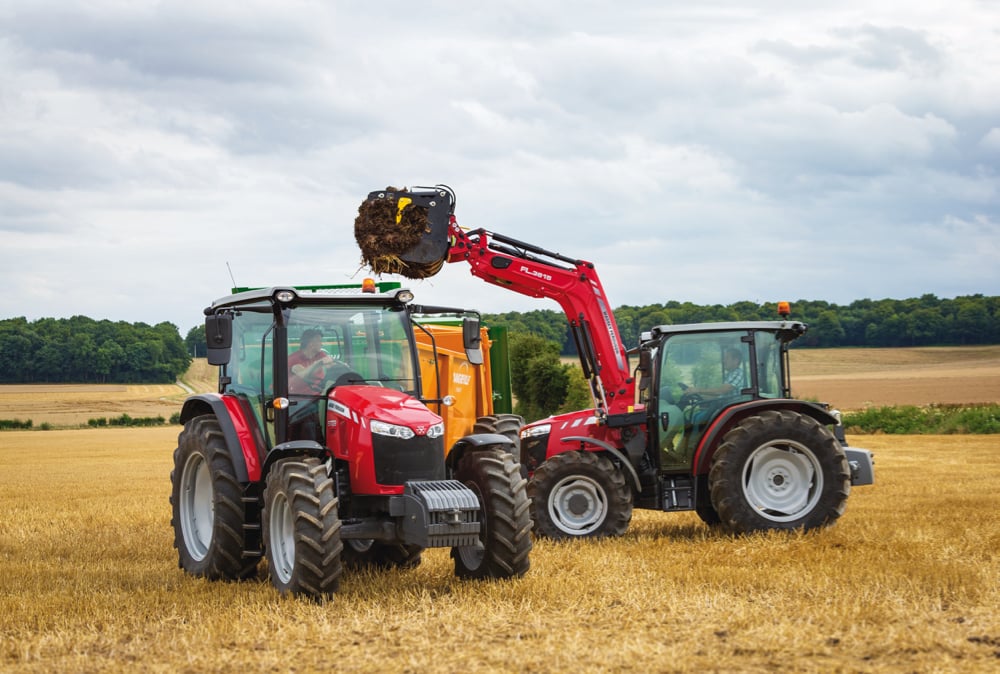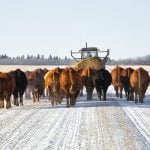Have you ever seen an International Harvester refrigerator, or a Massey-Ferguson cream separator? They were farmyard fixtures at one time. Farmers bought them from their local farm machinery dealership while buying a wide variety of other essentials too.
Over time, those equipment dealers evolved from that “everything-you-need-we’ve-got” business model to become machinery specialists, strictly purveyors of iron. Today, that trend is reversing, albeit not back to adding refrigerators and cream separators to their product line. But many of today’s equipment dealers are once again becoming a kind of one-stop farm support shop.
This time data management, agronomy and various other support services that are all intended to make farming more efficient are being blended with the traditional lineup of iron that sits on the front lot. While not every dealer has yet embraced this concept, it’s one that is gaining momentum across the industry — in both Canada and the U.S.

“What our customers are looking for are solutions,” says John Schmeiser, executive VP and CEO of the newly formed Western Equipment Dealers Association, who says there’s a good reason dealers are offering more data and information solutions too: “Customers will gravitate to a dealer or provider that will provide the easiest, most cost-effective solutions to their farming operations.”
And today’s largest farmers are on the leading edge of that wave of customers who are looking for much more than oil and filters when they walk through their dealership’s doors.
“We’re moving into a new era of service delivery, beyond just selling and servicing equipment,” Schmeiser says. “We’re selling data and information now to help the customer increase profitability. We think that’s what the customer wants. Certainly the larger customers are moving to this, because the needs and requirements on their farms have changed considerably.”
The drive for providing a broader range of services to customers arises in part from the extremely high purchase cost and growing sophistication of today’s machines, says Jim Wood, VP of agriculture at Rocky Mountain Equipment, Canada’s largest ag equipment dealership chain. He says dealers simply have to offer more support to farmers so they can get maximum value out of their costly equipment.
“What we’ve done over the past year and a half, we call ag optimization and technology,” Wood says. “We’ve got 25 specialists all across Western Canada. It’s not only technology, it’s the fact that when you’re selling someone a $400,000 or $500,000 piece of equipment, and they’re making their living with it, we better make sure that thing is operating at the most optimum, perfect performance possible.
“We’ve found in the farm equipment business, a lot of our customers trade every year. And a lot of new technology is included every year, but no one’s done a really good job of showing them how to use it,” Wood continues. “A lot of dealers talk about the data collection and that side of the business with GPS, but a lot of it is supporting the technology that’s built right into the equipment.”
Read Also

Summer Series: Old machines,new technology
One of my first jobs was working as a mechanic’s helper at a farm equipment dealership in the late 1970s….
Although Rocky itself won’t be adding things like agronomy services to its dealerships in the foreseeable future (which many dealers have chosen to do), those 25 optimization specialists will be helping customers collect data and engage with companies that do provide that service in the most efficient way possible.
That is why Rocky has recently partnered with the precision ag firm Decisive Farming, letting it handle that aspect of business but still making Rocky dealerships the first stop for farmers looking for expanded services.
“We (dealerships) are selling advice in addition to the equipment,” says the dealer association’s Schmeiser. “That’s a whole new area we’re moving into, providing new services to the customer to help them be more profitable on their farm.”
And just as dealers have evolved to better support their farmer customers, the trade association that represents dealers has also had to change. Last September, the Canada West Equipment Dealers Association, which had represented dealers in Western Canada for about 114 years, merged with the U.S.-based Southwestern Equipment Dealers Association to form a group with a broader North American focus, creating the Western Equipment Dealers Association. It now represents about 1,000 dealers in five states (as far south as Texas), four provinces and three territories.
“I’ve come to believe our producer customers want to do business with successful businesses,” Schmeiser says. “The whole goal (of the dealer association) is to increase the service level, professionalism and delivery right to the producer at the dealership level.”
Before the merger, the two groups — separated by the 49th parallel — initiated a study to help decide what a new dealer association should look like in order to meet dealers’ evolving needs.
“We called it Task Force 2100,” says Schmeiser. “The question that was thrown out was, if we were starting a new equipment dealer association today, what would it look like? The consensus was it would be one association across North America. That’s really the impetus for this initiative.”
The consensus was really that equipment dealer networks were consolidating, but their associations weren’t. Schmeiser points to Titan Machinery, headquartered out of Fargo, N.D. as an example: “They have locations across the United States that are in six different equipment dealer associations.”
A working group got set up with dealers from Canada and the U.S., and Schmeiser says that the more they talked dealer to dealer, the more they realized their issues were the same.
“The border didn’t matter as much as one might think,” Schmeiser says. Instead, challenges like finding good employees were the same, as were challenges with used equipment.
“That’s why I think this has come together so easily,” Schmeiser says.
Wood agrees. “It doesn’t matter if it’s in Oklahoma or Calgary, Alta., all the dealers have the same issues,” he says. “It’s people, it’s training, it’s manufacturer issues. There aren’t many borders when it comes to the farm machinery business.”
But there’s also more to it than that.
“Those larger dealer organizations are requesting a different level of service from their associations than single-store operations,” says Schmeiser. “We’ve spent a lot of time investing in education and training, because the large, multi-store operations were looking for people with the ability to manage a location that was doing $25 million in business. Where do you find this level of manager? So we, as an association, have invested heavily to provide training to groom store managers, or service, or parts managers.”
At the same time, Schmeiser says, the association is keeping up its resources to help single-store dealers who have no desire or opportunity to grow.
Back in 1990, the Canada West Equipment Dealer Association had 650 equipment dealer locations, with only a handful boasting multi-store operations. “In the last 24 years, that’s changed to a large multi-store environment like Rocky Mountain Equipment and Cervus Equipment,” Schmeiser says. “We don’t see that trend changing at all. It’s really the trend for the future.”

















